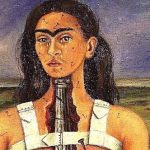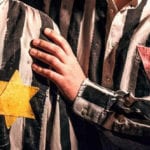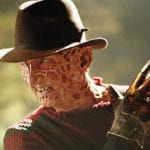 Mysteries
Mysteries  Mysteries
Mysteries  History
History 10 Surprising Stories About the Texas Rangers
 Humans
Humans 10 Philosophers Who Were Driven Mad by Their Own Theories
 Miscellaneous
Miscellaneous 10 Video-Game-Worthy Weapons and Armors from History
 Weird Stuff
Weird Stuff 10 Psychics Who Accurately Predicted Wartime Events
 The Arts
The Arts 10 Pieces of Art Inspired by a Broken Heart
 Health
Health 10 Science Fiction-Sounding New Medical Treatments
 History
History 10 Surprising Facts About the Father of Submarine Warfare
 Space
Space Ten Astonishing New Insights into Alien Worlds
 Weird Stuff
Weird Stuff 10 Bizarre Summer Solstice Rituals Still Practiced Today
 Mysteries
Mysteries Top 10 Haunting Facts About the Ghost Ship MV Alta
 History
History 10 Surprising Stories About the Texas Rangers
 Humans
Humans 10 Philosophers Who Were Driven Mad by Their Own Theories
Who's Behind Listverse?

Jamie Frater
Head Editor
Jamie founded Listverse due to an insatiable desire to share fascinating, obscure, and bizarre facts. He has been a guest speaker on numerous national radio and television stations and is a five time published author.
More About Us Miscellaneous
Miscellaneous 10 Video-Game-Worthy Weapons and Armors from History
 Weird Stuff
Weird Stuff 10 Psychics Who Accurately Predicted Wartime Events
 The Arts
The Arts 10 Pieces of Art Inspired by a Broken Heart
 Health
Health 10 Science Fiction-Sounding New Medical Treatments
 History
History 10 Surprising Facts About the Father of Submarine Warfare
 Space
Space Ten Astonishing New Insights into Alien Worlds
 Weird Stuff
Weird Stuff 10 Bizarre Summer Solstice Rituals Still Practiced Today
10 Real Historical Events That Inspired ‘Game of Thrones’
With The House of the Dragon on the horizon, many are looking fondly back at the immersive experience that was Game of Thrones (ignoring the last season, of course). Apart from amazing effects, epic battles, and incredible dialogue, the show captured the world’s fascination with an epic plotline and twists few saw coming.
As they say, though, truth is stranger than fiction. Many of these “wow” moments in the series were nods to actual events in history. Here are 10 of them! But if you’re one of the three people who hasn’t seen Game of Thrones, beware—there are spoilers ahead.
Related: Top 10 Real-Life Counterparts To Game Of Thrones Characters
10 The War of Five Kings / The War of the Roses
The underlying conflict in Game of Thrones is largely based on the historical War of the Roses, named the War of Five Kings in the series. In the historical war, raging between 1455 and 1485, several houses battled for control of the English throne, with houses Lancaster and York (Lannister and Stark) being the main contenders.
The hated Joffrey Lannister is very similar to the ruthless and bloodthirsty Edward of Lancaster, who, like Joffrey, was allegedly the illegitimate son of King Henry the VI. Like Robert Baratheon, King Henry’s death was the catalyst for the War of the Roses. Believing the heir to be illegitimate, Richard, Duke of York, believed he had a better claim.
Margaret of Anjou, King Henry’s wife and Edward’s mother, mirrors Cersei in her adulterous affairs, ruthless ambition, and central role to play. Like Cersei’s imprisonment of Ned Stark, Margaret of Anjou was largely responsible for spurring the two houses toward war with her undisguised preparations to attack the York house.
Richard York, just like Robb Stark, initially was winning the battles but, sadly, would eventually lose the war. The War of the Roses came to a close with Henry Tudor marrying Elizabeth of York, uniting the York and Lancasters. Having the Lannisters and Starks marry to end the war clearly wasn’t what happened in the series, but we’re going to avoid talking about the show’s ending…[1]
9 Jon Snow’s / Julius Caesar’s Assasinations
You likely let out an audible gasp when Jon Snow, handsome and charismatic leader of the Night’s Watch, was murdered by his own men. I sure did. After all, the show had a record of killing off its most beloved characters, and I had already had my heart broken by the deaths of Robb Stark, Khal Drogo, and poor honorable Ned. We know now, of course, that Jon wouldn’t stay dead for long, but boy, was that a miserable wait.
Jon’s death at the hands of his commanders is very akin to the infamous Ides of March, in which Caesar was similarly stabbed to death by members of the Roman Senate. You see, Caesar had worked his way up to become the ruler of Rome and intended to remain in power. Much to the horror of the nominated—not elected—Senate, Caesar was planning on naming himself Emperor of Rome, something the civilization had not yet seen. Despite the many advances Caesar provided for Rome and the peace under his rule, the Senate hated his arrogance and resented the thought of an Empire.
Caesar was ambushed by the Senate and stabbed 23 times to his death, one of his murderers being his adopted son, Brutus (represented by Ollie in GoT). In Shakespeare’s rendition of the event, Caesar’s last words were “Et tu, Brute?” (“You too, Brutus?”), and are hauntingly similar to Jon gasping Ollie’s name before the boy landed the fatal blow.
Unfortunately for the Senate, the people of Rome were horrified by the act and turned on them. With no clear ruler, Caesar’s death created a power vacuum, plunging the empire into years of civil war and making a whole mess of things. In the end, Emperor Augustus came to power, and Rome became an Empire, making killing Caesar both entirely pointless and ultimately a very poor choice. Oops.[2]
8 The Red Wedding / The Black Dinner
Few scenes were more horrifying than the Red Wedding, in which the beloved Starks were massacred in the halls of the deplorable Walder Frey, ending their war to avenge their liege lord. There’s plenty of death, despair, and twists in Game of Thrones, but the notion of being murdered while being wined and dined by a supposed ally is a different breed of despicable.
Plus—as Talisa was pregnant and had decided on a name—they essentially killed Eddard Stark twice. That’s just so wrong.
Anyway, inspiration for this infamous scene had its roots in history, as confirmed by the writer himself. George R.R. Martin confirmed that the “Red Wedding” was inspired by the Black Dinner, an event in medieval Scotland.
Sixteen-year-old William, Earl of Douglas, and younger brother David were invited to join ten-year-old King James II for dinner. James and William were friends, but unfortunately for the latter, the Black Douglas clan was seen as a threat to the new king’s rule. From the start, the dinner was a trap orchestrated by the Scottish Chancellor, Sir William Crichton.
Once seated, the two Douglas boys were presented with a plate bearing the head of a black bull—a symbol of the death of the Black Douglas. Even in history, it seems, people really had a good time with gestures of symbolism, and George R.R. Martin compared the severed bull’s head to Robb and his direwolf being beheaded.
Following being served this disgusting symbol, the two boys were arrested, given a mock trial, and beheaded.
Another event that partially inspired the Red Wedding was the Glencoe Massacre of 1692, in which the opposite event happened. Captain Robert Campbell sought the hospitality of the MacDonald clan, then murdered his hosts. In both instances, the sacred rules of hospitality were violated, lending to the horror that took place in Walder Frey’s hall.[3]
7 The Wall / Hadrian’s Wall
One of the most impressive and recognizable visual wonders of the show—other than the dragons, of course—was the dreaded “wall” of ice that separated the 7 Kingdoms from the “Wildlings.” This is a direct nod to Hadrian’s wall, an impressive 117-kilometer (73-mile) wall stretching from coast to coast across the modern-day United Kingdom.
Built by Emperor Hadrian (duh), the wall was constructed to protect the Roman province of Britannia from the unconquered Caledonia. Just like the Wildings of the North, the providences of Caledonia were roamed by clans considered to be lawless and savage, and their raids of Roman villages were common. There was great contempt between the Romans and their tribal neighbors, and the wall was seen as a deterrent to keep them at bay. Thankfully, the Romans didn’t have the army of the dead knocking at their door too.[4]
6 The Dothraki / Mongol Empire
When little Daenerys Targarian is married off to Khal Drogo, we get a glimpse into the rough, violent lifestyle of the nomadic warlord. In Dothraki culture, strength is valued over all, and across the land, they instilled fear as some of the deadliest warriors in the world.
This was much the same as the Mongol empire, which ruled much of Asia and Europe in the 13th and 14th centuries. Like the Dothraki, the Mongols were excellent warriors that defeated their enemies on horseback and were constantly on the move. Mongol children were trained in archery and horseback riding from a young age, a trait the Dothraki copied—learning to ride and fight starting at the age of four.
The Mongol Empire was founded by the fearsome Genghis Khan, a prolific warrior and fornicator who, to this day, is responsible for about 0.5 percent of the world’s male population. He is the direct inspiration for Khal Drogo, who was revered as the fiercest Khal among them all.[5]
5 The Battle of Blackwater Bay / The Siege of Constantinople
One of the many epic events of the show was the Battle of Blackwater Bay, in which fans were likely torn between wanting Stannis to really stick it to the hated Lannisters and simultaneously rooting for crowd favorite and only redeemable Lannister, Tyrion. In the show, our favorite dwarf outsmarts the larger Baratheon forces with Wildfire, a devastating concoction that burns stone, steel, wood, and flesh alike.
The inspiration for this little trick likely came from the second seizure of Constantinople. During this battle, the advancing Arab army was soundly defeated by a substance known as “Greek Fire,” which, like Wildfire, was able to continue burning on water. Just as Stannis’s naval force was obliterated, so was the attacking Arab fleet during the siege, their vessels soundly destroyed by the blaze before reaching the city walls.[6]
To this day, the exact composition of Greek fire is unknown.
4 Ramsay Bolton / King Ashurbanipal
One of the more satisfying moments of the series was watching the cruel and unpredictable Joffrey Baratheon meet his well-deserved, violent end. Had we only known what cruelty lay in our next villain, however, we may have gladly endured Joffrey instead.
Ramsay Bolton took his house’s sigil—the flayed man—quite literally, dolling out the method at a whim. His sadistic joy in the torture was stomach-churning, making it even worse to know that his character takes inspiration from a real person.
The Assyrians were feared not only for their prowess in battle but also for their lust for torture. King Ashurbanipal of the Assyrians was no different, harnessing torture as a means of psychological warfare. Apart from impalement and crucifixion, Ashurbanipal also enjoyed the public display of flaying to flex his power. Beginning at the buttocks, thighs, or lower legs, the unfortunate victim had their skin slowly peeled away. If that weren’t sick enough, King Ashurbanipal had a habit of hanging the peeled skin around the walls of his city in a grotesque reminder of what would happen to those who disobeyed. Gross.[7]
3 Joffrey’s / Attila the Hun’s Deaths
While we’re on the subject of Joffrey’s death, his demise definitely mirrors that of the infamous Attila the Hun.
Like Joffrey, Attila would meet his demise on his very wedding night. In celebrating his union with his new wife, the beautiful Ildico, Atilla got, well, drunk. As anyone should on their wedding night, right?
Sadly, his joy was short-lived. He was found dead the next morning under suspicious circumstances, bleeding from the nose and mouth. Accounts differ on whether he suffered internal bleeding due to his level of alcohol consumption or whether the inebriated groom choked to death after suffering a nosebleed. Either way, it paints a picture hauntingly akin to Joffrey’s sufferable last moments.[8]
2 Jamie Lannister’s / Götz von Berlichingen’s Prosthetic Hands
Jamie Lannister is a controversial character. On the one hand, we were rooting for the charming, suave Lannister to make a turnaround and become the honorable man Brienne of Tarth saw in him. Who doesn’t love a good character arc?
On the other hand, he did push a child out of a window.
Either way, Jamie losing his sword hand was a shocking turn of events in which you couldn’t help but feel bad for the guy. Losing a hand to the average Joe is bad enough, but the Kingslayer lost a lot of himself with it—”I was that hand,” as he put it. Upon returning to King’s Landing, Jamie receives a gold prosthetic which, other than being very Lannister, had to be heavy and pretty impractical, right?
It turns out his prosthetic hand has origins in history. German knight Gotz von Berlichingen lost his own right hand at the age of 23 due to enemy cannon fire. Accounts differ, with one saying the blast hit his sword, which then hacked off his arm, while another claims the cannon took the arm clean off. Either way, Berlichingen left the battle one hand lighter.
Like Jamie, this was Berlichingen’s fighting hand, and he was also presented with a prosthetic. Unlike Jamie’s hand, however, Berlichingen’s replacement was made of iron and sported joints that allowed him to continue to use that hand to fight. Using his left hand to tighten the joints of his iron one, he was able to close the iron joints around a sword. “Götz of the Iron Hand,” as he would become known, continued to fight until the age of 64, after which he retired.[9]
1 The Lord of Light / Zoroastrianism
“For the night is dark and full of terrors.” Another great example of internal conflict when it comes to loving or despising characters is the Red Woman and her “Lord of Light.” By the end of the show—which, yes, was infuriatingly badly executed—it becomes clear that Melisandre had a role to play after all. That said, her eagerness to burn people alive, including the innocent princess Shereen, solidified her place as ultimately evil.
The Lord of Light (known as R’hllor) is a nod to what is arguably the oldest monotheistic faith, Zoroastrianism. Followers of this faith honored one god and held fire as a sacred symbol, as it represented light, warmth, and purifying powers. Melisandre and other followers of R’hllor speak of fire as “burning away the sins” and death by fire to be the “purest death.”[10]








